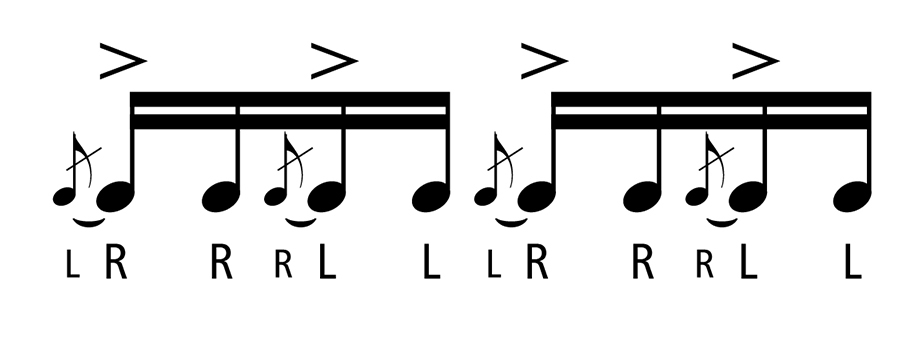Flam taps are a favorite rudiment of mine. They involve the use of rebound, making them ideal for fast passages, and they leverage some of the more basic elements of technique that make them a great entry-level flam rudiment. Flam taps are best for high-energy passages as they are not suited particularly well for playing softly.
Independent Hands
The way to develop your flam tap skills is to play a triple-beat stroke on your right hand, with each successive stroke lower than the previous. The first stroke is a full wrist turn accent, with the second stroke in the comfortable middle ground, and the final stroke about an inch off the head. Build the strength working just one hand, and then do the same off the left hand. Only after doing that should you put both hands together to form the flam tap rudiment:

Key Elements
The most critical element is understanding how the triple beat stroke on one hand fits into the two-handed flam tap; this way you can build the technique of each hand independently. The second most important element is keeping that third stroke low as it becomes the grace note of the flam. If that third stroke is too high, you’ll lose all sound quality on your flams and be unable to control the rudiment.
Controlled Rebound
When played correctly there is a comfortable rebound occurring with each triple stroke, and the sound of each of the successive strokes has a natural decay. You will not be successful trying to independently stick each of the triple strokes—at least not when tempos get higher. A controlled rebound can create both high-quality tight flams as well as the rounded sound of a double or triple beat.


